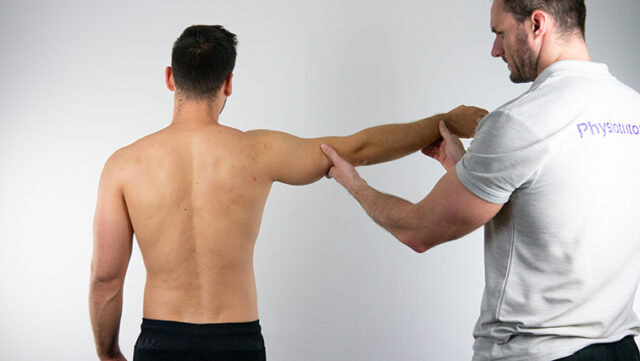Learn
Drop Arm Sign for Full-Thickness Rotator Cuff Tears
The Drop Arm Sign has a sensitivity of 73% and a specificity of 77% in the diagnosis of full-thickness tears of the Supraspinatus and Infraspinatus tendons according to a study done by Miller et al. (2008). Another study by Sgroi et al. (2019) only evaluated its clinical accuracy regarding the diagnosis of infraspinatus tears and found a sensitivity of 43% and a specificity of 81%. The post-test probability of a full-thickness tear is therefore only moderately altered which is why we assign this test a moderate clinical value.
To perform the drop arm test to have your patient in standing or sitting position and bring the affected arm into 90 degrees of Abduction and external rotation passively.
Then tell your patient to hold this position and release your supporting hand.
This test is positive for full-thickness tears of the Supra- and Infraspinatus if your patient is unable to slowly control the downward movement thus the name drop Arm Sign.
Other orthopedic tests that are common to assess full-thickness rotator cuff tears:
- Medial/internal rotation lag sign | Subscapularis
- Lateral/external rotation lag sign | Supraspinatus & Infraspinatus
- Infraspinatus Test | Infraspinatus
- Transdeltoid Palpation / Rent Test
21 OF THE MOST USEFUL ORTHOPAEDIC TESTS IN CLINICAL PRACTICE

References
Like what you’re learning?
BUY THE FULL PHYSIOTUTORS ASSESSMENT BOOK
- 600+ Pages e-Book
- Interactive Content (Direct Video Demonstration, PubMed articles)
- Statistical Values for all Special Tests from the latest research
- Available in 🇬🇧 🇩🇪 🇫🇷 🇪🇸 🇮🇹 🇵🇹 🇹🇷
- And much more!








